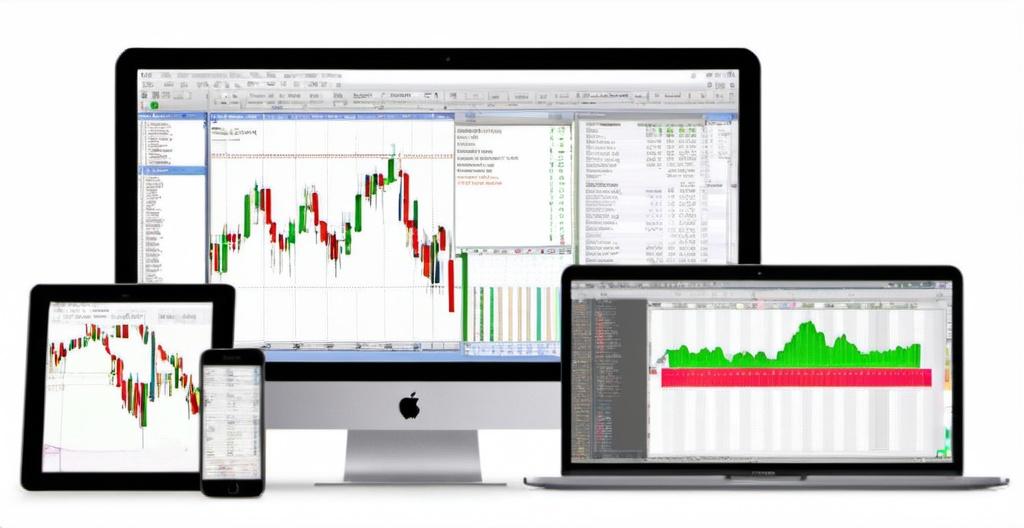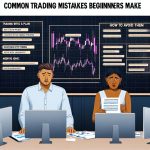Monthly Archives: August 2025

The Importance of Keeping a Trading Journal
The Role of a Trading Journal
A trading journal is a systematic record of all your trading activities. It serves as a crucial tool for traders seeking to refine their skills, track their performance, and identify patterns in their trading behavior. Unlike primarily emotional accounts, a trading journal provides factual insights into one’s trading strategy, risk management, and decision-making processes.
Enhancing Trading Strategies
A comprehensive trading journal is fundamental in enhancing and evolving a trader’s strategies. By meticulously recording the details of each trade—such as the rationale behind it, the prevailing market conditions, and its outcome—traders gain the ability to closely examine their strategies. This examination helps in objectively assessing which strategies yield the best results and identifying areas where adjustments are necessary. This detailed analysis can reveal profitable patterns and highlight unanticipated inefficiencies in the trading approach.
Improving Risk Management
Risk management is an integral aspect of successful trading. A trading journal aids traders in keeping a keen eye on their risk exposure, enabling them to adapt their strategies as necessary. By diligently logging the risk level of each trade, traders can make well-informed decisions on resource allocation, ensuring that they do not over-leverage themselves. This systematic documentation helps in mitigating potential losses and aligning the risk-reward ratios with traders’ financial goals. Efficient risk management, facilitated by a trading journal, ultimately contributes to sustaining a trader’s market presence.
Gaining Psychological Insight
The psychological dimension of trading often does not receive the attention it deserves. A trading journal provides a unique perspective on a trader’s emotional responses to diverse market situations. Reflecting on past trades allows traders to identify behavioral patterns that might lead to impulsive or misguided decisions. Recognizing these tendencies aids in developing stronger emotional discipline—a critical factor for achieving long-term success in trading.
The process of writing down one’s thoughts and emotions linked to each trade can help uncover subconscious biases influencing the trading process. Overcoming these psychological barriers is essential for maintaining composure and making rational decisions, especially in the face of market volatility.
Tracking Performance Over Time
A well-maintained trading journal presents traders with a valuable historical record of their performance. This documentation is instrumental in measuring progress over time and setting practical, attainable goals. By keeping a detailed record of every trade, traders can calculate vital metrics including win/loss ratios, average returns, and risk-to-reward ratios. These statistics are essential indicators of trading performance, providing insights into areas of strength and opportunities for improvement.
Longitudinal tracking of performance allows traders to gauge the effectiveness of their strategies across different market conditions and periods, fostering a deeper understanding of market dynamics and personal growth as a trader.
Resources for Building a Trading Journal
Numerous resources exist to assist traders in maintaining an efficient trading journal. Various software applications and online platforms can facilitate streamlined record-keeping, providing tools for detailed analysis and report generation. For those new to trading or establishing a trading journal, educational websites and financial blogs offer tutorials, tips, and best practices.
An example of a valuable resource is Investopedia’s guide on trading diaries. This guide provides insights into creating and maintaining a comprehensive trading journal, making it an excellent reference point for beginners and experienced traders alike.
Beyond external resources, traders can leverage personal experiences to customize their journals, including data points that are most relevant to their individual trading style and objectives. Personalization of a trading journal ensures it becomes an even more powerful tool in the pursuit of trading excellence.
In conclusion, a trading journal is an indispensable tool for serious traders. By systematically enhancing strategy development, risk management, and emotional control, it provides a solid foundation for comprehensive performance analysis. Integrating a well-maintained trading journal into one’s routine is paramount for traders aiming to thrive in the competitive landscape of financial markets. Through consistent reflections and analyses, traders harness the potential to significantly improve their chances of achieving sustained success.
Trading Signals
Trading signals are marketed as shortcuts to success—alerts that tell you when to buy or sell without the need to spend hours studying charts. For newcomers, that can sound like the perfect solution. Why struggle with technical indicators or risk management when someone else can “do the work” and deliver ready-made trades?
That promise is exactly what makes signals such a magnet for scams. The industry around trading signals is filled with providers offering impossible win rates, guaranteed profits, and secret strategies. Many traders sign up expecting consistent success but find themselves losing money faster than if they had traded on their own.

The Reality Behind the Marketing
Most signals are unregulated products. Anyone can create a Telegram group or a website and begin charging fees for alerts without proving expertise or results. Scammers exploit this freedom by promoting fabricated performance data and pressuring traders into depositing with offshore brokers that pay them commissions. Once traders commit funds, the quality of the signals quickly drops, leaving them frustrated and financially exposed.
A blunt warning comes from Binaryoptionssignals which highlights the state of the industry:
“The harsh truth is that most trading signal services are scams, designed to profit from subscriptions and broker kickbacks rather than from delivering real, reliable analysis.”
That statement reflects what many traders discover the hard way—that signals are often just another revenue stream for untrustworthy operators.
Why Traders Fall for It
The primary victims are beginners who don’t yet know how to evaluate market information or strategies. They see screenshots of huge profits, social media testimonials, and urgent sales tactics. The promise of quick wins often overshadows the reality that every trade carries risk. Instead of learning the skills required to succeed, new traders outsource decisions to unverified providers and end up paying for advice that rarely works.
Using Signals Safely
Not every signal provider is fraudulent, but even the legitimate ones should be treated as educational tools rather than guaranteed profit machines. Traders who use signals wisely treat them as a secondary opinion or as examples to learn from, while still relying on their own analysis and risk management.
Final Thoughts
Trading signals are one of the most common traps in the retail trading world. The idea sounds appealing, but the reality is that scams dominate the space, leaving most traders worse off than before. Approaching signals with skepticism and understanding that there are no shortcuts is the only way to avoid falling victim.

Why You Should Start Trading with a Demo Account
Understanding Demo Accounts
Trading with a demo account is a common practice for both novice and experienced traders. Essentially, it is a simulated trading platform offered by brokers that allows individuals to practice trading without the risk of losing real money. This tool replicates the actual market conditions, providing a platform to understand market mechanisms and develop trading strategies. This makes demo accounts an invaluable resource for anyone who wants to delve into the world of trading.
Risk-Free Environment
One of the primary benefits of using a demo account is the risk-free environment it offers. Traders can conduct transactions with virtual money, which means users can experiment without the potential for financial loss. This feature is particularly beneficial for beginners who are still learning the ropes of trading. Having the freedom to make mistakes without dire consequences encourages experimentation, fostering a deeper understanding of different trading methods and techniques.
Understanding Market Dynamics
Demo accounts are invaluable for learning how the markets work. They provide direct exposure to real-time market conditions, price movements, and the nuances of executing trades. This exposure helps traders gain a much-needed understanding of market dynamics before committing real capital. Such insight is crucial in a live trading environment where market volatility can have significant impacts on trading outcomes.
Teaching Strategy Development
Utilizing a demo account allows for the development and testing of trading strategies. Traders can implement different techniques to see which strategies deliver the best results. This testing ground is crucial in helping users refine their approaches, making informed adjustments before applying them in a live environment. Through trial and error, traders can discover what works best for them, thereby formulating robust strategies that are critical for achieving financial goals.
Learning Trading Tools
Trading platforms can be complex, especially for those new to the field. Demo accounts often replicate the features of live accounts, offering an opportunity to learn the tools and features of trading platforms. Understanding how to set up charts, place trades, and utilize analytical tools is integral to successful trading. Becoming familiar with these tools also means that traders can act swiftly to take advantage of market opportunities or to mitigate risk when necessary.
Increasing Confidence
Gaining experience without the fear of monetary loss helps in building trader confidence. As traders learn and apply their knowledge, they become more self-assured in their abilities, preparing them for when they eventually transition to a live account. This newfound confidence translates into better decision-making, as it mitigates the anxiety and fear that may accompany real money trading.
Experimenting with Different Markets
Demo accounts allow users to explore a variety of markets such as forex, stocks, commodities, and more. This variety aids in identifying which market aligns best with the trader’s skills and interests. Such exploration is essential for a trader to decide where they might have a competitive edge or where their analytical skills can be best applied. It is not uncommon for traders to discover a preference for certain markets over others, thereby helping to tailor their future trading endeavors.
Real-Time Practice
A unique advantage of demo accounts is the ability to participate in real-time trading scenarios without the associated risks. This aspect goes beyond mere practice; it allows traders to engage with market data, test hypotheses in real-world conditions, and analyze performance outcomes. Such engagement is invaluable as it helps in understanding how external factors like economic news or geopolitical events influence market behaviors.
Tracking and Improving Performance
Demo accounts also serve as an excellent resource for tracking and improving trading performance. Most platforms provide detailed analytics and reports on trading activities, enabling traders to review their performance over time. This review process is an essential component of developing as a trader. Analyzing both successful and unsuccessful trades allows for identifying patterns or mistakes that need correction. Over time, this iterative improvement cycle leads to more effective trading strategies and better overall performance.
Familiarizing with Broker Interfaces
Lastly, demo accounts are a great way to familiarize oneself with different broker interfaces. Different brokers offer varying features and navigating these platforms efficiently is as important as understanding market principles. A demo account usually mirrors the live trading account in features and functionalities, thus, providing an accurate sense of how the user interface operates. This familiarity can be beneficial when a trader ultimately decides to transition to a live account, as it minimizes the time spent on figuring out how things work.
Conclusion
Starting with a demo account is a prudent step for any aspiring trader. By offering a risk-free environment to learn and test strategies, it plays an essential role in trading education. This practice not only helps in understanding market mechanisms but also builds the necessary skills and confidence for live trading. The myriad benefits of using demo accounts cannot be overstated, from strategy development and confidence building to understanding complex trading tools. They form a critical foundation for success in the trading domain. For further information on how to get started, consider visiting resources like Investopedia which provide guides and tutorials on trading.

How to Control Emotions While Trading
Understanding the Impact of Emotions in Trading
Trading in the financial markets requires a blend of analytical skills, discipline, and emotional control. These elements together create the foundation for decisions that ideally lead to successful trades. However, one of the critical challenges traders face is the influence of emotions on their decision-making processes, often leading to impulsive actions that undermine trading success. Understanding and managing one’s emotions, therefore, becomes pivotal for any trader aiming for consistent and long-term profitability.
The Role of Emotions in Trading
Emotions such as fear, greed, and hope are natural human responses that can adversely affect trading if not properly managed. Fear can lead traders to exit positions prematurely, resulting in missed opportunities and potential losses. When a trader exits a position too early, they might miss out on additional gains due to an overestimation of risk scenarios, succumbing to the anxiety about potential losses. On the other hand, greed can cause traders to hold onto trades for too long, leading to riskier situations and potential loss of profits. The allure of further gains might overshadow the risk factors associated with holding positions longer than necessary.
Hope in trading may sound positive, but it often manifests as the rationalization of bad trades, deterring an objective assessment of a situation. Traders might hold onto positions, hoping for a reversal in adverse conditions, rather than relying on the strategic indicators that initially guided their actions. This emotional bias can cloud judgment, leading to decisions that stray from calculated strategies.
Strategies for Managing Emotions
Managing emotions in trading requires deliberate strategies to mitigate their impact, ensuring decisions are based on analysis and planning rather than impulses.
1. Develop a Trading Plan: A comprehensive trading plan is essential to providing defined criteria for trade entry and exit. This plan acts as a guideline to reduce the influence of emotions by establishing clear rules. Every trading plan should detail strategies that align with overall trading goals, establish risk management techniques, and provide concrete objectives. Following a structured plan shifts focus from emotional responses and helps maintain discipline by minimizing deviations based on fleeting emotional responses.
2. Risk Management: Implementing effective risk management techniques is critical to controlling emotions during trading activities. Techniques such as setting stop-loss orders and predetermined exit strategies help limit potential losses and reduce anxiety, thereby minimizing emotional pressure. This approach promotes a calm decision-making process, where traders are less likely to react impulsively to market fluctuations or unexpected events.
Monitoring and Reviewing Performance
Regularly reviewing and assessing trading performance can help identify emotional biases that may affect trading decisions. Keeping a trading journal is a valuable practice that allows traders to document not only the financial aspects but also the emotional state and context of each decision made. This record-keeping facilitates self-reflection and highlights behavioral patterns, allowing traders to recognize tendencies that may lead to emotional trading.
By analyzing trading journals, traders can identify recurring patterns and emotional triggers associated with specific market conditions. This awareness enables traders to prepare strategies tailored to combat these emotional responses, better equipping them for similar situations in the future.
Seeking Support and Education
Engaging in continuous education about market behavior and trading strategies can enhance a trader’s confidence and reduce emotional stress. With a deeper understanding of market dynamics, traders are likely to feel more grounded in their decisions, addressing fear and stress factors more effectively.
Moreover, joining trading communities and seeking mentorship from experienced traders provide external perspectives and support. This engagement reduces feelings of isolation common among traders, offering platforms to exchange ideas and gain insights into the emotional aspects of trading. Additionally, experienced mentors can provide guidance on managing emotions, sharing techniques that have worked effectively in their own trading practices.
Applying psychological techniques such as mindfulness and stress management strategies can further improve emotional resilience. Traders who practice mindfulness can enhance their focus and awareness of their emotional states, enabling quicker recognition and management of emotional impulses. Managing stress through relaxation techniques and routine breaks during trading can reduce emotional volatility, contributing to more calculated decision-making processes.
For more insights on managing emotions in trading, consider exploring resources and platforms dedicated to emotional intelligence in trading, such as trading forums and educational sites. Leveraging such resources can enhance both psychological and strategic aspects of trading. By doing so, traders cultivate a balanced approach, where discipline merges with strategic insights to foster profitable and efficient trading behaviors over time.

Common Trading Mistakes Beginners Make and How to Avoid Them
Understanding the Basics Before Diving In
Entering the world of trading can be both exciting and daunting for beginners. The thrilling allure of financial markets often causes newcomers to jump in headfirst, yet many overlook the vital importance of building a solid foundation of knowledge before taking action. One of the most significant errors that beginners make is engaging in trading activities without a comprehensive understanding of the core principles.
First and foremost, it is essential to grasp fundamental concepts such as the functioning of financial markets. The markets are complex systems where various assets are traded, including stocks, bonds, commodities, and currencies. Each asset class has its characteristics, and understanding these is crucial for making informed trading decisions. Furthermore, the mechanisms of supply and demand, market liquidity, and price movements play integral roles in market dynamics.
Additionally, familiarizing oneself with the terminology and jargon used in trading is necessary for effective communication and comprehension. Terms such as bid and ask prices, spreads, and trading volume provide insights into the actions occurring in the market. Without this understanding, a trader may feel lost in the sea of information and data. Fortunately, there is a wealth of educational resources and courses available online. These resources cater to novice traders, aiming to illuminate the fundamental aspects of trading.
Emotional Trading: The Pitfall of Beginners
One of the critical challenges that beginners face is the difficulty in managing emotions during trading. Emotional responses like fear and greed can significantly impact decision-making processes, often leading to undesirable outcomes. For instance, panic can cause traders to sell assets at a loss, fearing further decline. Conversely, greed may lead them to hold onto losing trades or invest in risky ventures, hoping for improbable returns.
To navigate these emotional intricacies, it’s imperative to establish a well-defined trading plan. This plan serves as a structured guide for traders, helping them to manage reactions stemming from market fluctuations. Key components of a robust trading plan include clearly defined entry and exit points, risk management strategies, and profit targets. Adhering rigidly to this plan can aid in minimizing impulsive decisions, which are often driven by emotion rather than logic.
Overleveraging: A Risky Misstep
Leverage, while providing traders the ability to control larger positions with relatively small capital, can be a double-edged sword. When wielded effectively, leverage amplifies profits. However, it can also magnify losses significantly, posing risks, especially to inexperienced traders.
Beginners may find the prospect of substantial gains enticing and may be inclined to use high levels of leverage, inadvertently increasing their exposure to risk. The consequences of overleveraging can be severe, potentially leading to significant financial loss and, in some cases, complete capital depletion.
To mitigate this risk, it’s prudent for newcomers to exercise caution with leverage usage. A conservative approach, such as starting with a low leverage ratio, allows traders to gradually build their confidence and understanding of market dynamics before increasing their leverage. This cautious progression is essential for sustainable trading practices.
Lack of a Diversified Portfolio
A common misstep among novice traders is the failure to diversify their investment portfolios adequately. By concentrating investments in a single asset or sector, traders expose themselves to heightened volatility and risk. A non-diversified portfolio is particularly vulnerable to negative market events within a specific industry or geographic region.
Diversification is a risk management strategy that involves spreading investments across various asset classes and sectors. This approach aims to reduce the impact of poor performance in any single investment on the overall portfolio. By achieving a balanced portfolio, traders can attain more stable returns over time and minimize exposure to individual asset volatility.
Ignoring Risk Management Practices
Effective risk management is a cornerstone of successful trading. However, many newcomers neglect this critical aspect, often focusing solely on potential profits without adequately considering potential losses. This oversight can lead to significant financial setbacks.
Implementing proper risk management techniques is essential for safeguarding capital. Setting stop-loss orders is a fundamental practice that helps limit potential losses by specifying the price at which a trade should be exited. Additionally, determining an appropriate risk/reward ratio for each trade ensures that potential profits justify the risks undertaken. By consistently applying these risk management strategies, traders can protect their investments and promote long-term sustainability in the trading arena.
Overtrading: The Impulse to Trade Frequently
Beginners may feel compelled to engage in frequent trading, driven by the desire to capitalize on every market movement. However, this impulsive behavior, known as overtrading, can have detrimental effects.
Excessive trading often results in increased transaction costs, eroding potential profits. Additionally, the constant involvement in market transactions can lead to emotional burnout, affecting decision-making capabilities.
The emphasis should be on the quality rather than the quantity of trades. Traders should meticulously analyze opportunities and only execute trades that align with their strategic objectives and market analysis. By adopting a disciplined approach, they can enhance focus and increase the likelihood of achieving positive outcomes.
The Importance of Continuous Learning
The financial markets are in a constant state of flux, influenced by myriad factors, including economic indicators, geopolitical events, and technological advancements. To navigate this ever-evolving landscape, continuous learning is paramount for traders.
Beginners should dedicate a portion of their time to expanding their knowledge. This can be achieved by staying abreast of current trends, reading financial news, participating in webinars, or engaging with trading communities. By doing so, traders can refine their strategies, enhance their understanding of market dynamics, and make more informed decisions over time.
Conclusion
In conclusion, trading is a complex endeavor that demands careful preparation, continual learning, and disciplined execution. By comprehending and avoiding the common pitfalls highlighted, beginners can significantly enhance their trading skills. Understanding the importance of mastering the basics, managing emotions, practicing prudent risk management, and maintaining diversification are vital steps in developing a sustainable trading practice. Over time, these efforts will contribute to the improvement of a trader’s competence and the likelihood of long-term success in the marketplace.

The Role of Leverage in Trading and How to Use It Safely
The Concept of Leverage in Trading
Leverage is a fundamental concept in trading that involves borrowing capital to increase the potential return on investment. Understanding leverage is crucial for traders as it can significantly amplify both gains and losses. Essentially, leverage allows traders to open larger positions than their actual account balance would permit.
In trading, leverage is often expressed as a ratio, such as 10:1 or 100:1. This indicates how much more than their investment a trader can trade. For instance, with a leverage of 100:1, a trader with $1,000 can control a position worth $100,000. Leverage is commonly used in the forex market, but it is also available in other markets like commodities, equities, and cryptocurrencies.
How Leverage Works
Leverage works by using borrowed funds from a broker to amplify the size of a trading position. This means that traders only need to deposit a fraction of the full value of the trade. This fraction is known as the margin, which acts as a security deposit to cover potential losses.
For example, if a trader uses 50:1 leverage and wants to trade $50,000 worth of currency, they would only need to provide $1,000 as margin. The remaining $49,000 would be funded by the broker.
Benefits of Leverage
One of the primary advantages of leverage is the ability to control large positions with a relatively small amount of capital. This can result in substantial profits if the market moves in the trader’s favor. Additionally, leverage allows for greater flexibility and the potential to diversify across different assets or markets.
Traders can engage in multiple trades simultaneously, potentially capitalizing on various market conditions. This ability to conduct a diversified trading strategy is one of the key attractions of using leverage. By not tying up a significant part of their own capital in a single position, traders can explore different opportunities and strategies.
Furthermore, for experienced traders who have a good grasp of market trends, leverage can be an efficient way to maximize returns. Through careful analysis and market predictions, traders can enter and exit positions at optimal times, enhancing the possibility of profit.
Risks Associated with Leverage
While leverage can enhance returns, it also increases the risk of significant losses. Because leverage magnifies both gains and losses, a small adverse price movement can result in substantial financial loss. Thus, it is essential for traders to use leverage judiciously and implement risk management strategies.
One of the primary risks is related to volatility. Markets can be unpredictable, and a rapid change in price can lead to significant losses. Traders using high leverage might find themselves in a situation where their margin is insufficient to cover the position, potentially resulting in a margin call from the broker. This requires traders to provide additional funds or reduce their position,s to maintain their trade.
Additionally, emotional risks cannot be overlooked. With high leverage, the stakes are higher, and traders may find themselves experiencing stress and emotional volatility, which can impair decision-making. It is important for traders to maintain discipline and avoid making impulsive decisions driven by fear or greed.
Using Leverage Safely
To use leverage safely, traders should first have a well-thought-out trading plan and a clear understanding of the markets they are trading. It is also crucial to:
– Determine an appropriate level of leverage: Based on risk tolerance and market conditions, traders should carefully assess how much leverage to use. Beginners are often advised to start with lower leverage until they gain sufficient experience.
– Utilize stop-loss orders: These are predefined price levels at which a trader will exit a position to prevent further losses. By setting stop-loss orders, traders can limit their risk exposure and protect their capital from significant downturns.
– Regularly monitor and adjust positions: Market conditions can change rapidly, and traders need to be vigilant in monitoring their trades. By staying informed and making timely adjustments, traders can respond to market movements effectively.
Additionally, staying informed about relevant risk management techniques and continually educating oneself about market trends and developments is critical. This includes understanding the mechanics of leverage, recognizing potential risks, and learning how to mitigate them through various strategies.
To further enhance safety, traders might also consider employing hedging strategies. Hedging involves taking positions in different markets or financial instruments to offset potential losses in others. This can create a more balanced risk profile and offer some protection against adverse market movements.
Traders should continuously evaluate and adjust their strategies based on their performance and changing market conditions. Flexibility and adaptability are crucial traits for successful leveraged trading. Learning from past trades, understanding both successes and failures, and adjusting strategies accordingly can contribute to long-term success.
Another important aspect of using leverage safely is to ensure that one’s financial situation is stable. Traders should only trade with capital they can afford to lose, as trading invariably involves risks. Adequate capital reserves provide traders with the cushion needed to absorb potential losses without jeopardizing their overall financial well-being.
By implementing these strategies, traders can maximize the benefits of leverage while minimizing associated risks. Effective use of leverage requires a combination of technical knowledge, strategic foresight, and emotional discipline. When used appropriately, leverage can be a powerful tool in a trader’s arsenal, opening up opportunities that would otherwise be inaccessible. However, it requires a responsible and informed approach to ensure its potential is fully realized without unduly exposing oneself to risk.